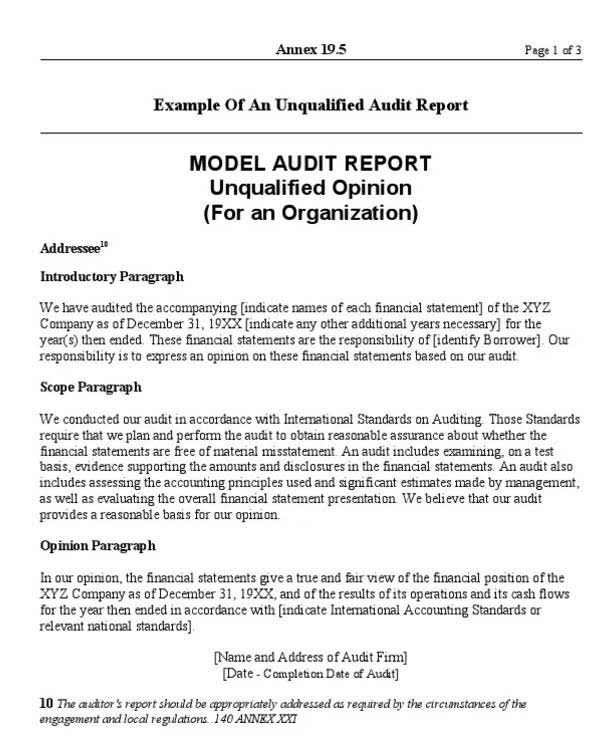The Basic Accounting Equation ACC 220 Accounting for Small Business
29/03/2022

Metro issued a check to Rent Commerce, Inc. for $1,800 to pay for office rent in advance for the months of February and March. For the past 52 years, Harold Averkamp (CPA, MBA) hasworked as an accounting supervisor, manager, consultant, university instructor, and innovator in teaching accounting online. Receive instant access to our entire collection of premium materials, including our 1,800+ test questions. If you have difficulty answering the following questions, learn more about this topic byreading our Accounting Equation (Explanation).
- A debit refers to an increase in an asset or a decrease in a liability or shareholders’ equity.
- If a transaction is completely omitted from the accounting books, it will not unbalance the accounting equation.
- Merely placing an order for goods is not a recordable transaction because no exchange has taken place.
- This is how the accounting equation of Laura’s business looks like after incorporating the effects of all transactions at the end of month 1.
- The three components of the accounting equation are assets, liabilities, and equity.
- While trying to do this correlation, we can note that incomes or gains will increase owner’s equity and expenses, or losses will reduce it.
- An error in transaction analysis could result in incorrect financial statements.
Where Should We Send Your Answer?
- For each of the transactions in items 2 through 13, indicate the two (or more) effects on the accounting equation of the business or company.
- If the left side of the accounting equation (total assets) increases or decreases, the right side (liabilities and equity) also changes in the same direction to balance the equation.
- As a core concept in modern accounting, this provides the basis for keeping a company’s books balanced across a given accounting cycle.
- So, as long as you account for everything correctly, the accounting equation will always balance no matter how many transactions are involved.
- All of our content is based on objective analysis, and the opinions are our own.
- Metro Corporation earned a total of $10,000 in service revenue from clients who will pay in 30 days.
- For example, an increase in an asset account can be matched by an equal increase to a related liability or shareholder’s equity account such that the accounting equation stays in balance.
The accounting equation helps to assess whether the business transactions carried out by the company are being accurately reflected in its books and accounts. In this form, it is easier to highlight the relationship between shareholder’s equity and debt (liabilities). As you can see, shareholder’s equity is the remainder after liabilities have been subtracted from assets. This is because creditors – parties that lend money such as banks – have the first claim to a company’s assets. Assets represent the valuable resources controlled by a company, while liabilities represent its obligations. Both liabilities and shareholders’ equity represent how the assets of a company are financed.
Where should we send your answer?

Like any mathematical equation, the accounting equation can be rearranged and expressed in terms of liabilities or owner’s equity instead of assets. Although the balance sheet always balances out, the accounting equation can’t tell investors how well a company is performing. If a business buys raw materials and pays in cash, it will result in an increase in the company’s inventory (an asset) while reducing cash capital (another asset). Because there are two or more accounts affected by every transaction carried out by a company, the accounting system is referred to as double-entry accounting. Before explaining what this means and why the accounting equation should always balance, let’s review the meaning of the terms assets, liabilities, and owners’ equity. Essentially, the representation equates all uses of capital (assets) to all sources of capital, where debt capital leads to liabilities and equity capital leads to shareholders’ equity.
ACC 220 – Accounting for Small Business

Understanding how the accounting equation works is one of the most important accounting skills for beginners because everything we do in accounting is somehow connected to it. Mr Ram, a sole proprietor has the following transactions in his books of accounts for the year 2019. The ingredients of this equation – Assets, Liabilities, and Owner’s equities are the three major sections of the Balance sheet. By using the above equation, the bookkeepers and accountants ensure that the “balance” always holds i.e., both sides of the equation are always equal. It derives its status only from the accrual system of accounting and thereby, it does not apply in a cash-based, single-entry accounting system.
Owners’ Equity = Assets – Liabilities
In other words, the total amount of all assets will always equal the sum of liabilities and shareholders’ equity. The accounting equation is also called the basic accounting equation or the balance sheet equation. The three components of the accounting equation are assets, liabilities, and equity.

The shareholders’ equity number is a company’s total assets minus its total liabilities. This straightforward relationship between assets, liabilities, and equity is considered to be the foundation of the double-entry accounting system. That is, each entry made on the debit side has a corresponding entry (or coverage) on the credit side. For example, an increase in an asset account can be matched by an equal increase to a related liability or shareholder’s equity account such that the accounting equation stays in balance.
Liabilities are settled over time through the transfer of economic benefits including money, goods, or services. The global adherence to the double-entry accounting system makes the account-keeping question content area the accounting equation may be expressed as and -tallying processes more standardized and foolproof. Accounts receivable list the amounts of money owed to the company by its customers for the sale of its products.
- Double-entry accounting is a system where every transaction affects at least two accounts.
- The ingredients of this equation – Assets, Liabilities, and Owner’s equities are the three major sections of the Balance sheet.
- If it’s financed through debt, it’ll show as a liability, but if it’s financed through issuing equity shares to investors, it’ll show in shareholders’ equity.
- This information can help you understand your business’s financial position and make informed decisions about growing your business.
- For information pertaining to the registration status of 11 Financial, please contact the state securities regulators for those states in which 11 Financial maintains a registration filing.
The Basic Accounting Equation
This information can help you understand your business’s financial position and make informed decisions about growing your business. If you find it difficult to answer any of these questions, read our article on the accounting equation to learn more. Test your knowledge of the accounting equation by answering the 10 short questions given below. It can be defined as the total number of dollars that a company would have left if it liquidated all of its assets and paid off all of its liabilities.
Assets in Accounting: A Beginners’ Guide

Alternatively, an increase in an asset account can be matched by an equal decrease in another asset account. It is important to keep the accounting equation in mind when performing journal entries. For a company keeping accurate accounts, every business transaction will be represented in at least two of its accounts.
Assets = Liabilities + Owner’s equity
A debit refers to an increase in an asset or a decrease in a liability or shareholders’ equity. A credit in contrast refers to a decrease in an asset or an increase in a liability or shareholders’ equity. This equation sets the foundation of double-entry accounting, also known as double-entry bookkeeping, and highlights the structure of the balance sheet. Double-entry accounting is a system where every transaction affects at least two accounts. If an accounting equation does not balance, it means that the accounting transactions are not properly recorded.









